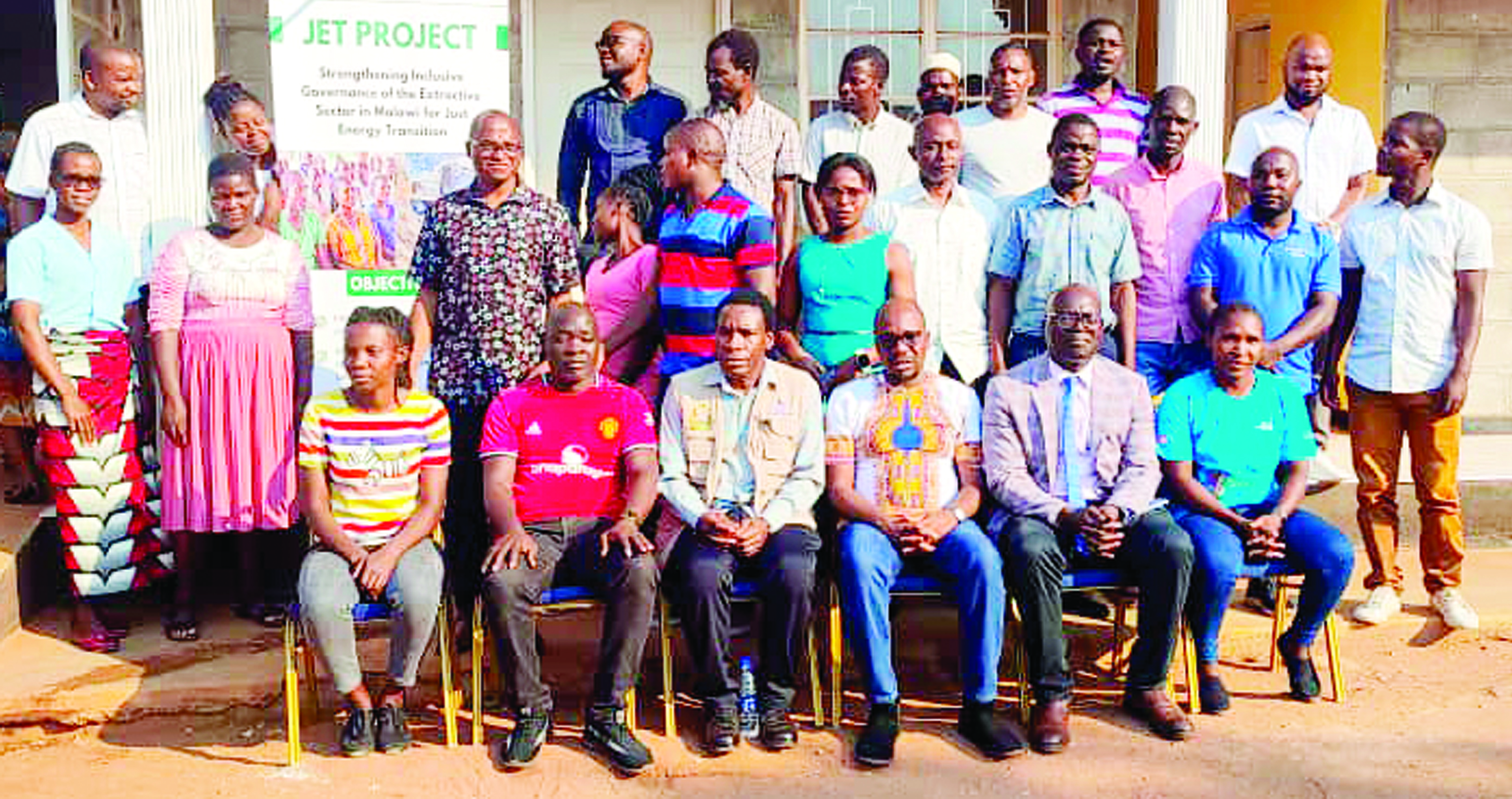
Mining & Trade News
Malawi Online News
Top Stories
Mining
Phalombe District pushes for decentralisation of Mining Sector
November 14, 2025 / Patrick Lunda

Participants at the meeting
Government has been urged to decentralise the mining sector to give districts with mineral deposits more power in decision making in the extraction of the minerals and utilization of revenue from mineral sales to ensure increased benefits of mining in development of the districts.
Phalombe District Commissioner Douglas Moffat made the appeal during an orientation workshop for the district council officials and civil society organisations in the district on mining governance and just energy transition (JET).
He said the decentralisation of the mining sector to district councils would help officials to carry out governance issues on mining and ensure that communities are sensitised on how the mining industry operates. Moffat said decentralization wouldl also help the coucils to have adequate funding as well as increasing the number of qualified personnel to handle mining issues including scaling up awareness to the local communities.
He said: "Mining is happening in the villages at Area Development Committee (ADC) level. We need somebody who has the capacity, the know-how, trained in mining, and geological capacities. We do not have that.
Therefore, if that capacity is only existing in Lilongwe, that is a problem. How are we going to advise local people and the miners on whatever has been written in line with the Mining Law? We need that capacity at the district level so that we can advise the council adequately.
"We cannot facilitate the mining processes if we do not have the capacity. Otherwise, it is going to be trouble. We have heard where local people rise against the office of the District Commissioner (DC) whenever there is a mining company with necessary papers doing its job. It is because there is no capacity, the office of the DC struggles to align with the demand when such services are required. So, it is indispensable for the mining sector to devolve and make sure that it has specific officers to handle mining issues in the district."
Moffat suggested that government should pilot the designation of mining officers in all districts which are experiencing an increase in the proliferation of mining activities. Centre for Environmental Policy and Advocacy (CEPA) Executive Director Herbert Mwalukomo, whose organisation arranged the orientation meeting, said it is crucial to build the capacity of local councils with knowledge on mint ing laws and regulations.
“One of the natural resources that the country is endowed with are minerals. Knowing that government recently signed some mining development agreements including with Mkango Resources for rare earth mining in Phalombe, we saw it a necessity to come here and work with various stakeholders including the community to increase awareness of various stages of the mining project,” he said.
Phalombe District is rich in rare earth minerals with major deposits at Songwe Hill. Director of Mining in the Ministry of Energy and Mining Mphatso Chikoti and Leonard Mushani Principal Economist in the Ministry of Finance and Economic Development were among the resource persons at the meeting.
The Malawi Mining Regulatory Authority, which governs mining activities in Malawi including issuing of licences, operates from the capital city Lilongwe but the country has regional Mines Offices in Blantyre and Mzuzu.
Decentralisation will ensure that District Mining Officers are appointed and increase access to mining services by rural communities whose areas host a number of mining projects.































